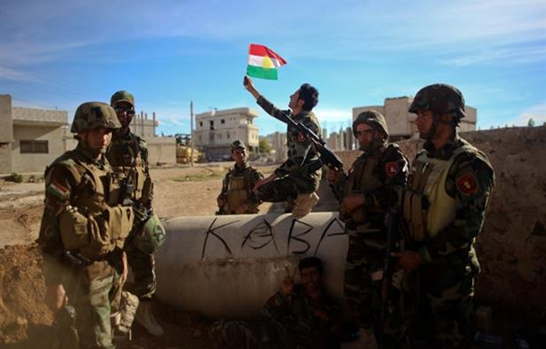Why Kobane’s resistance is a wake-up call for Europe
External Relations 9 February 2015One year ago, the confrontation against Bashar al Assad’s regime was overshadowed by the rapid expansion of ISIS / Daesh, the self-claimed state that occupied a core-territory of around 100.000 sq.m across Iraqi and Syrian border.
Their further expansion, an atrocious and brutal wave of violence, triggered the EU reaction: former foreign policy chief Ashton availed the call of some EU Foreign Ministers – including the current High Representative Mogherini – for an extraordinary Foreign Affairs Council on 15 August 2015, paving the way for a first joint reaction to the humanitarian crisis.
Yet, the political response to the crisis still remained under discussion, and EU countries moved on with individual policies. Since September, France, the UK, Belgium, the Netherlands and Denmark joined President Obama’s call to provide troops and air coverage along with his “Operation Inherent Resolve”, one of the strands of the United States’ strategy. Nonetheless, other EU countries (most notably Italy and Germany), immediately supported the August plan with other means, through the delivery of equipment and trainings to the Kurdish People’s Protection Units (YPG).
The initiative of the international community did not immediately prove effective; even if under Western air coverage Syrian and Iraqi Kurds could not resist IS autumn campaign until, in last October, the back IS flag was waiving in the Syrian-border town of Kobane.
Gaining full control of the town became one of the strategic directive for both parties also for his high symbolic value – as a Syrian Kurdish commander told, “if necessary we will repeat the Stalingrad resistance in Kobane.”
It took four months of harsh fighting and the lives of thousand to raise YPG flag where the Islamic State’s one was standing. Is it over? No, and it will not without a comprehensive and continuous engagement of European countries.
During a private exchange with the author, a senior diplomatic source from the EU effectively highlighted:
“Kobane is closer to Berlin than Los Angeles is to New York. Yes, we should do more”.
The European Union as such has primarily focused on humanitarian assistance to the region, with an aggregate of 3.1 billion euros to provide relief and support to the refugees fleeing conflict zones – as reinforced last Wednesday by Commissioners Stylianides and Han in Beirut.
With IS regrouping in Syrian Kurdistan even a short-term solution to the crisis still remains to be identified. Most of its possible ground lays in the original Syrian crisis, still severely ongoing behind the headlines of IS killings. In December’s Foreign Affairs Council, the EU backed the UN Special Envoy Staffan De Mistura on enforcing a ceasefire in Aleppo, despite fears from some Member States on the advantages it would deliver to Assad’s regime.
Freezing the conflict in one part of the region is a step-stone to allow any follow-up action from the international community, and neither is possible without the involvement of Syria (for an eventual mediation endeavor) or Russia (for any possible UN-led intervention). Relations with Moscow are inevitably subjugated to the developments in Ukrainian crisis, but a convergence of interests on Syria and Iraq is not to be excluded – ironically, any crisis may provide negotiation space for another.
If things will not change, it is undoubtful that the EU will play an ancillary role, even compared to its own Member States. However, the stakes are too high not to take all the risks in playing all possible mediation efforts. It must be the case, before fire will spill-over on its much-troubled Southern Neighbourhood or, worse, within its own territory.
Or should we wait for one more leap in Kobane to infect EU leadership?








